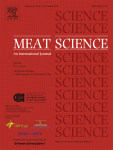
Abstract
As one of the alternatives for livestock meat production, in vitro culturing of meat is currently studied. The generation of bio-artificial muscles from satellite cells has been ongoing for about 15 years, but has never been used for generation of meat, while it already is a great source of animal protein.
In order to serve as a credible alternative to livestock meat, lab or factory grown meat should be efficiently produced and should mimic meat in all of its physical sensations, such as visual appearance, smell, texture and of course, taste. This is a formidable challenge even though all the technologies to create skeletal muscle and fat tissue have been developed and tested. The efficient culture of meat will primarily depend on culture conditions such as the source of medium and its composition. Protein synthesis by cultured skeletal muscle cells should further be maximized by finding the optimal combination of biochemical and physical conditions for the cells. Many of these variables are known, but their interactions are numerous and need to be mapped. This involves a systematic, if not systems, approach. Given the urgency of the problems that the meat industry is facing, this endeavor is worth undertaking. As an additional benefit, culturing meat may provide opportunities for production of novel and healthier products.
Highlights
► Alternatives to livestock meat production are discussed. ► Cultured meat from satellite cells is promising. ► Efficient production and meat mimicry: essential for cultured meat acceptance. ► Technologies to culture meat are ready to be optimized.
Keywords
Cell culture
Tissue engineering
Meat substitutes
Copyright © 2012 Elsevier Ltd. All rights reserved.
